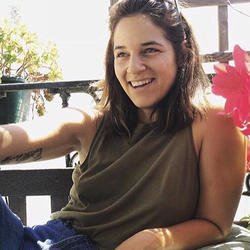Emily Shapiro
Lecturer - History of Art & Visual Culture
Image

Emily Shapiro is a designer, writer and design historian based in Providence. She specializes in 20th-century design, popular culture and material culture, with special interests in narratives of identity, myths of collective experience and inquiry into the ways in which designed spaces like the home, the city and the built environment can connect and inform both personal and collective identity. Her courses unpack the importance of objects in both memory- and identity-making, examining the connections between visual culture, artifact and ideology in order to reveal their impact on the sociopolitical processes of identity creation and the visualization of the self as a collective, both local and national.